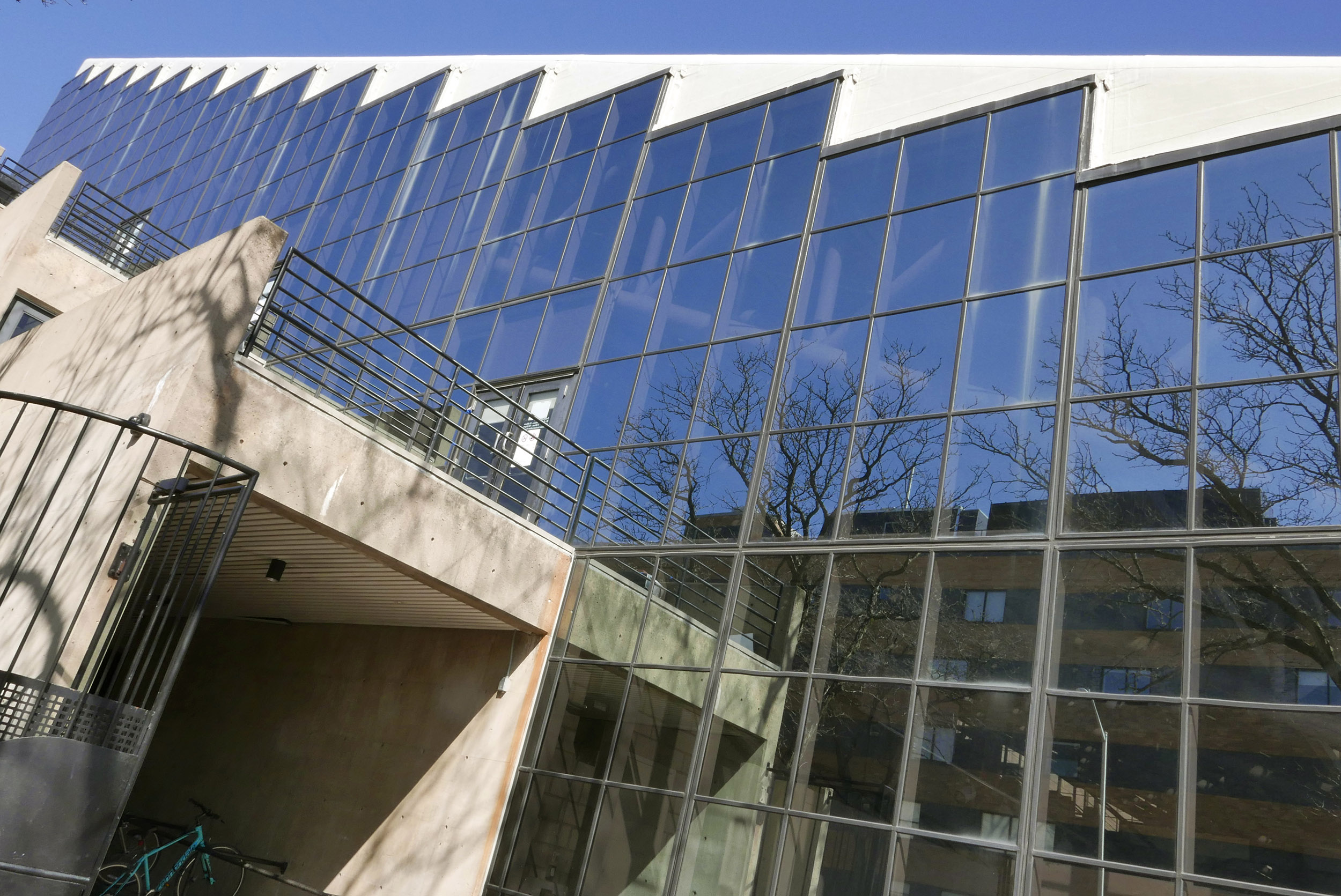
View of Gund Hall at Harvard Graduate School of Design.
Jon Chase/Harvard Staff Photographer
Architects of their future
Four Native American students make history at the Graduate School of Design
For the first time in its history, Harvard Graduate School of Design (HGSD) has four Native American students enrolled.
Design and architecture schools across the country have historically had few Native students, with no more than a handful at a particular school at any given time. And out of over 90,000 working architects in this country, only a small percentage are Native American, notes GSD student Elsa Hoover. (A 2015 American Institute of Architects diversity report listed American Indian or Alaska native at 1 percent, based on survey responses.)
Elsa Hoover, Zoë Toledo, Heidi Brandow, and Jaz Bonnin are the four at Harvard, and together they have formed the Harvard Indigenous Design Collective to promote design by and for Indigenous communities, which is foundational to the history, theory, and practice of design fields on Native homelands.
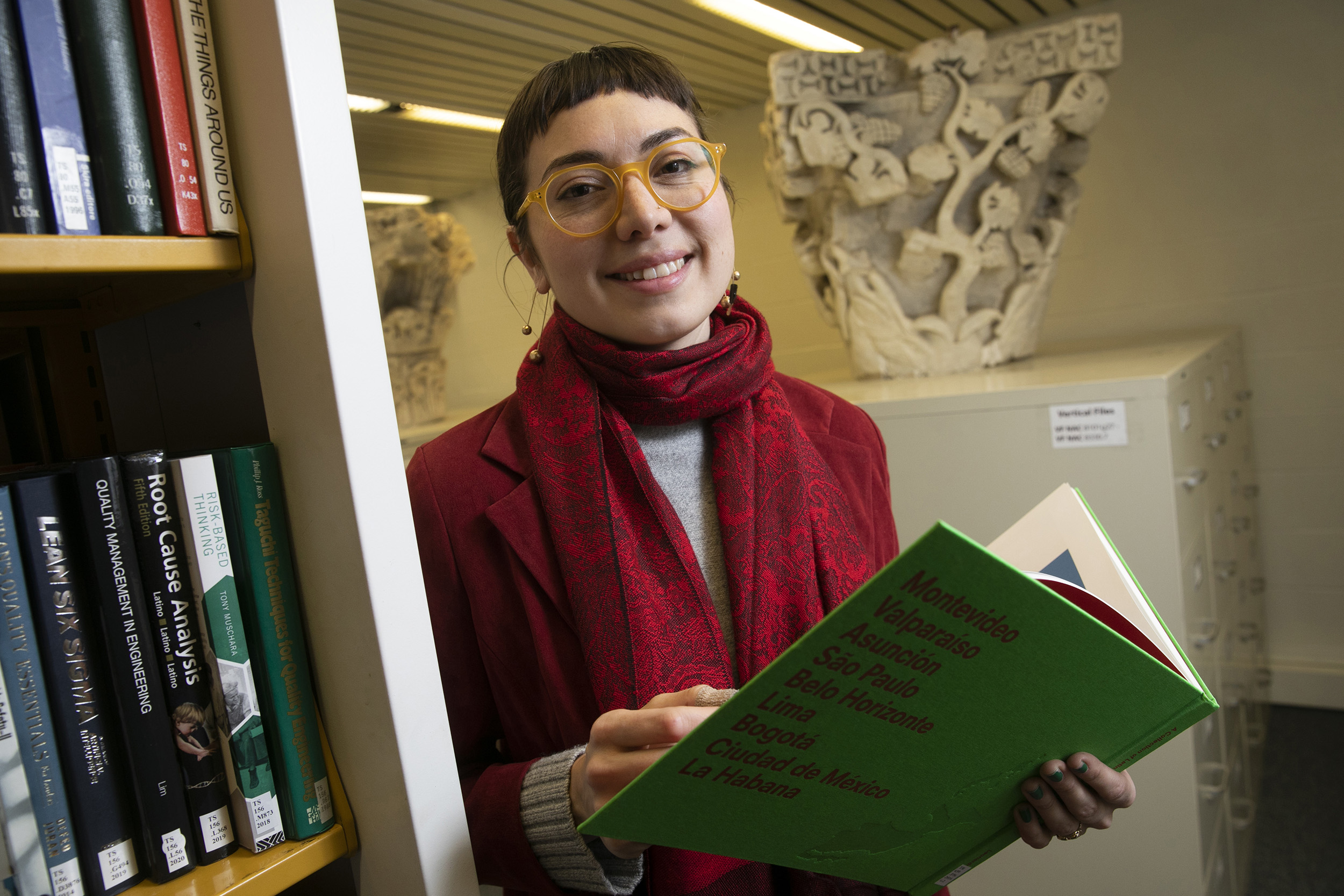
Jaz Bonnin, M.Des.’21, in the library at Gund Hall. Bonnin is Yankton Sioux, Blackfoot, Irish, Danish, French, Panamanian, and Mexican Native descent. “I am enrolled in a master’s of design program, focusing on issues of conservation and preservation. My goal is to specialize in designing atriums, courtyards, and indoor-outdoor garden spaces for small-scale residential, commercial and adaptive-reuse clientele,” she says.
Jon Chase/Harvard Staff Photographer
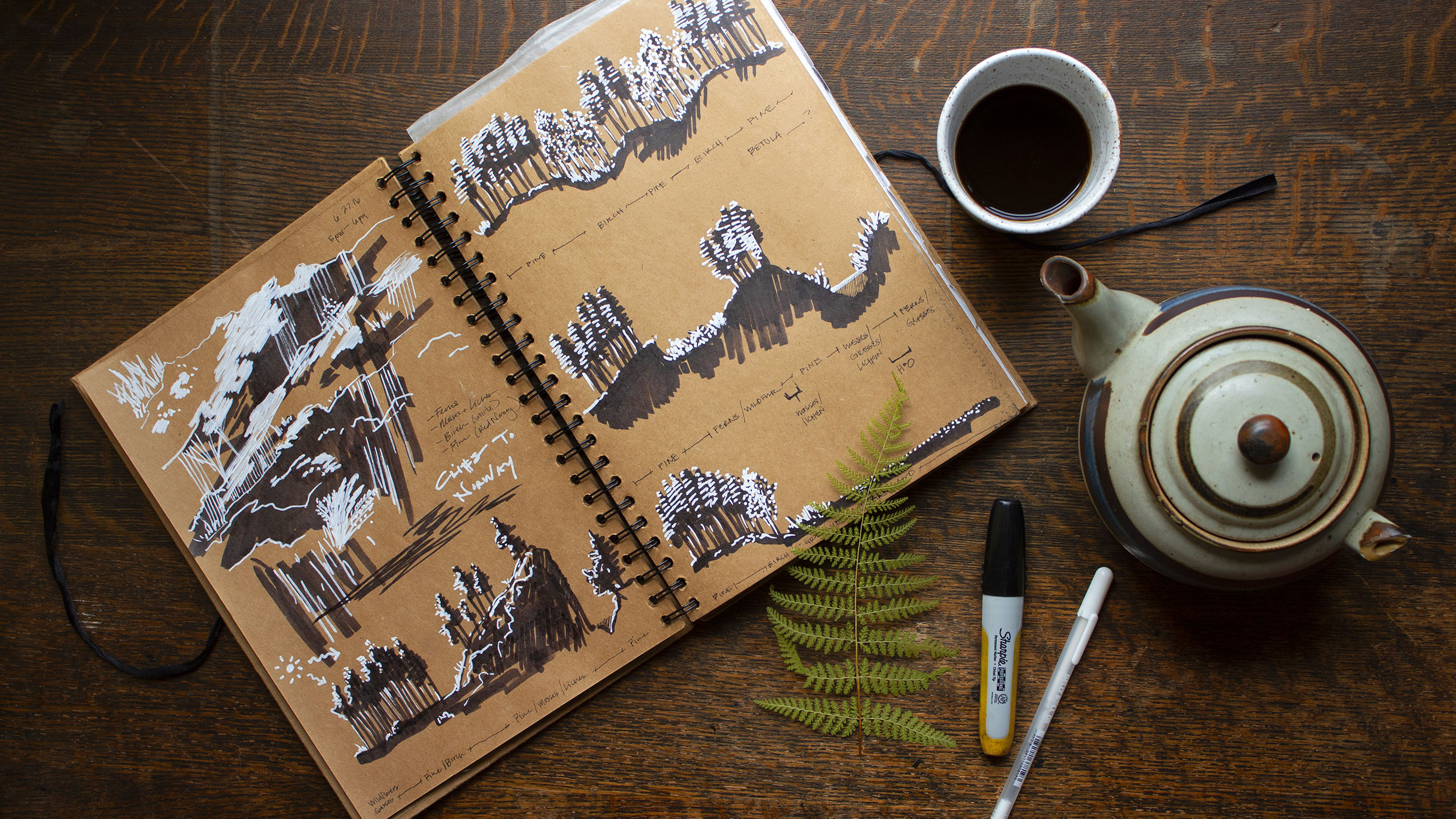
Landscape sketchbook of Jaz Bonnin: “I feel that, as our understanding of nature and wilderness evolves with global issues like climate change, our design practices, too, should accommodate a broader, more holistic understanding of nature.”
Photo by Jaz Bonnin
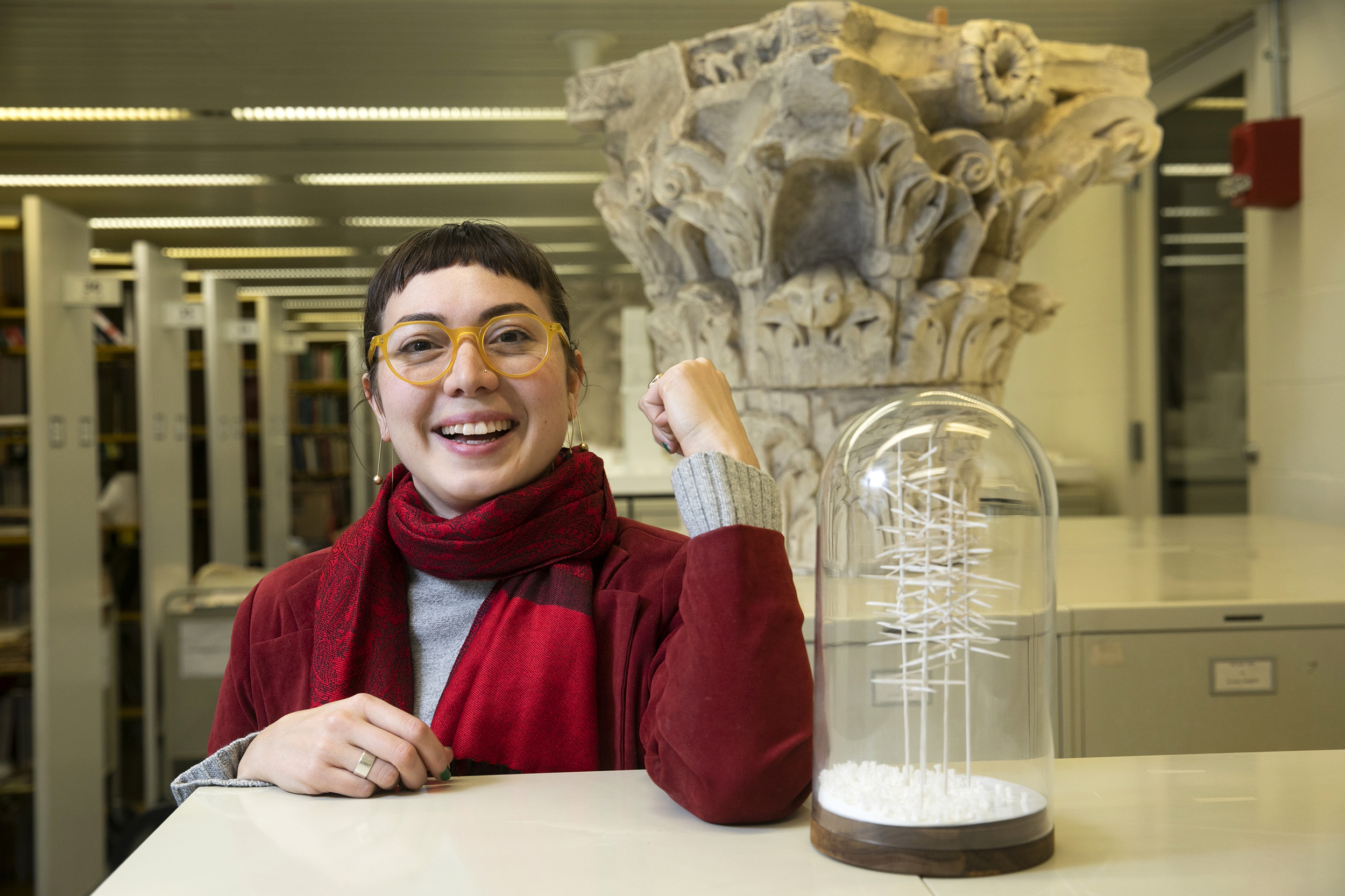
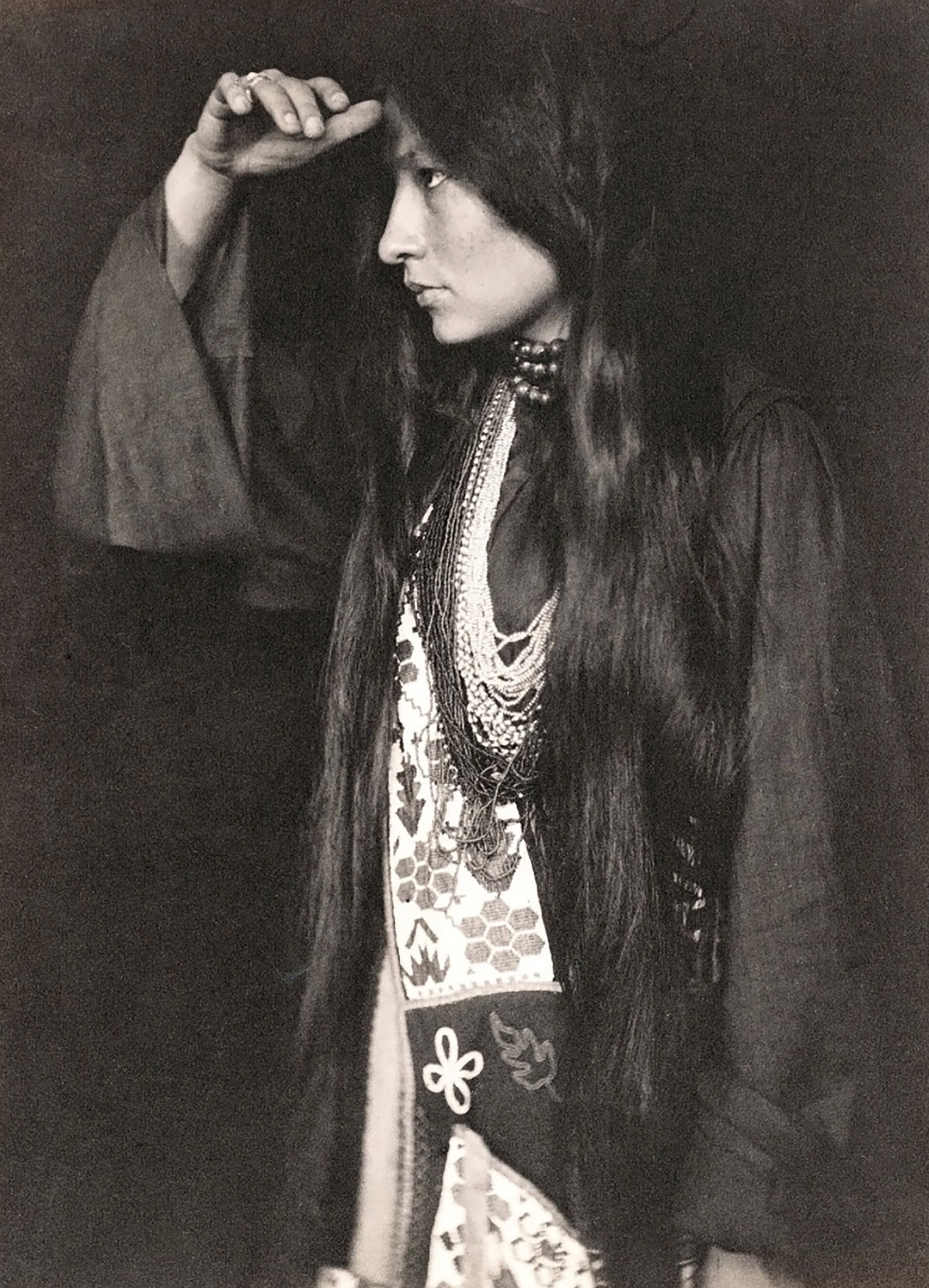
Jaz Bonnin with a small model enclosed in glass. “I am the first woman in my immediate family to graduate from high school and then college,” she says. One notable family member of Bonnin’s was Gertrude Simmons Bonnin (1877-1938), a teacher, poet, author, classical violinist, and political activist for indigenous rights. She studied at the New England Conservatory in Boston and co-wrote the first — and possibly only — known American Indian opera.
Photos by Jon Chase/Harvard Staff Photographer; Gertrude Käsebier/National Museum of American History

Elsa Hoover, M.Arch. ’23, works on a model at her Gund Hall desk. Raised in Minneapolis, she is of Anishinaabe First Nations and Finnish descent. She currently writes about theory and the history of indigenous rights, resource extraction, and conflicts over oil and water.
Jon Chase/Harvard Staff Photographer
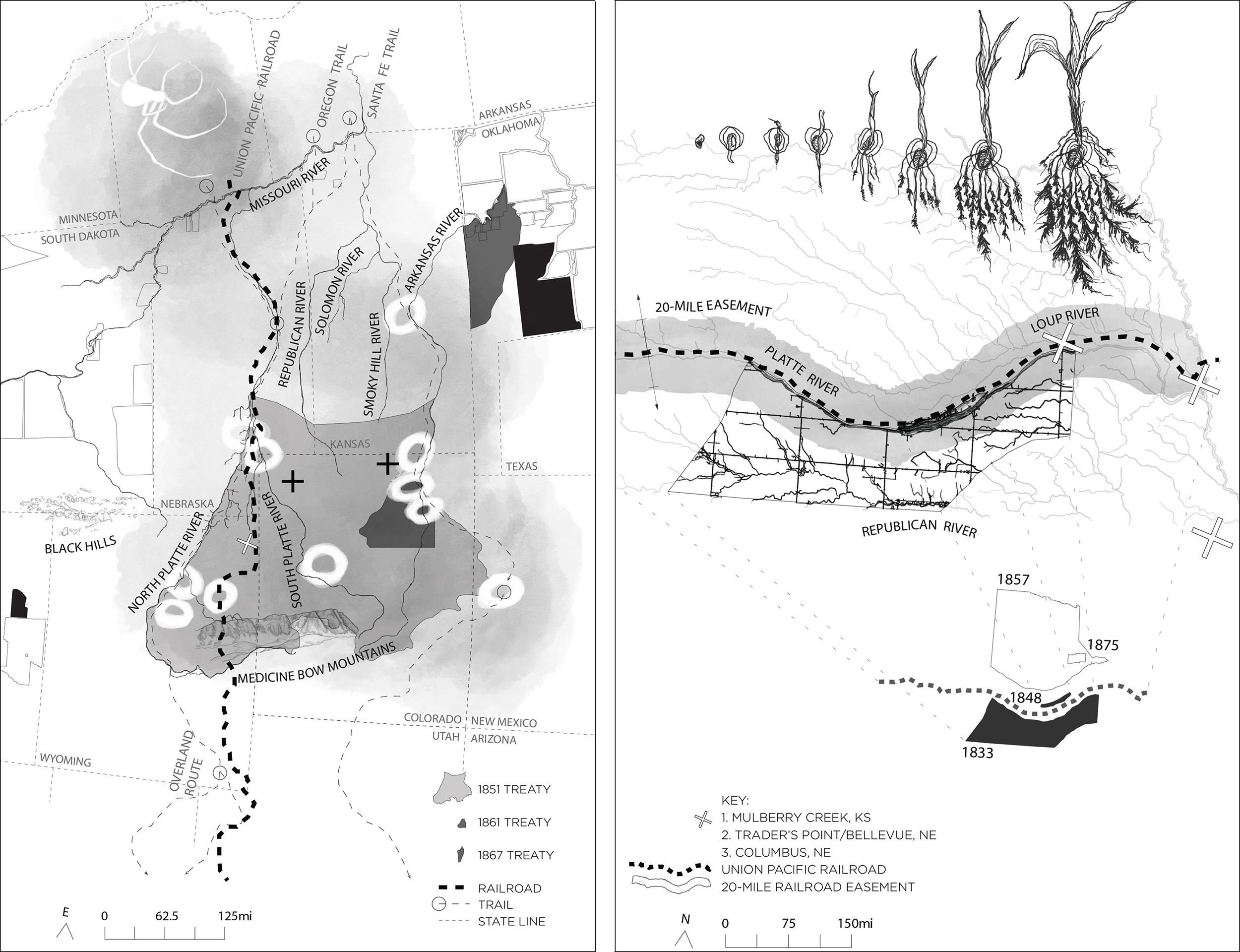
These maps come from a set of 10 prepared for the book “Empire’s Tracks: Indigenous Nations, Chinese Workers, and the Transcontinental Railroad” by Manu Karuka. For the Pawnee Nation, the story includes ongoing legislative land seizure that decimated Pawnee agricultural management across their territory. For the Cheyenne Nation, the railroad’s map is a constellation of massacres and resistance raids.
Cartography by Elsa Hoover/Barnard College

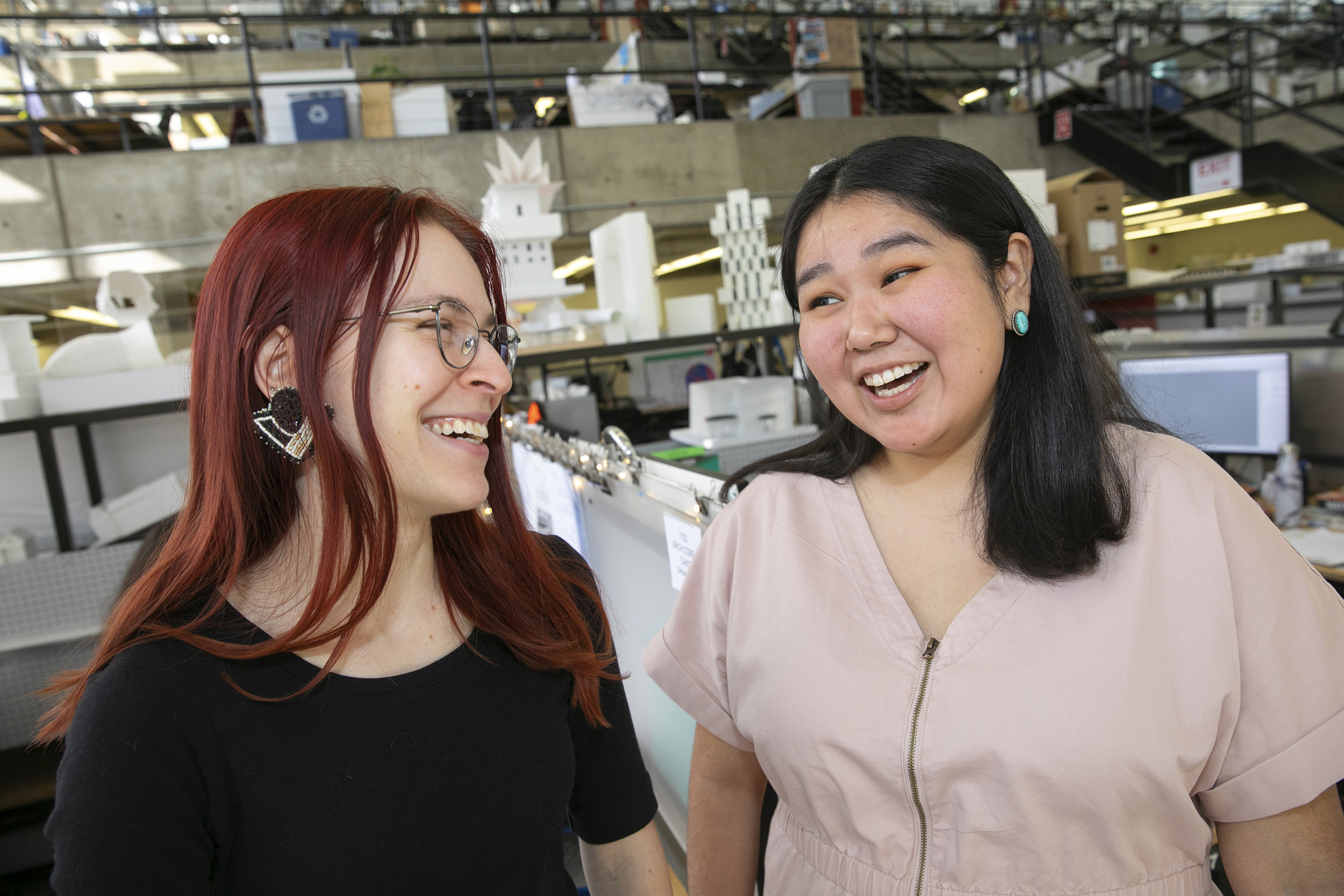
Elsa Hoover (left) and Zoë Toledo, M.Arch. ’23, discuss a model in the trays (the open, multi-tiered workspace) at Gund Hall. “Zoë and I first met when we were undergrads at Princeton and Columbia, at an All-Ivy Native Council Summit in 2014,” says Hoover. “From the moment Elsa and I learned that both of us had been accepted to the GSD, we realized how rare and powerful it would be for us as Native students to be able to find community,” Toledo adds.
Photos by Jon Chase/Harvard Staff Photographer
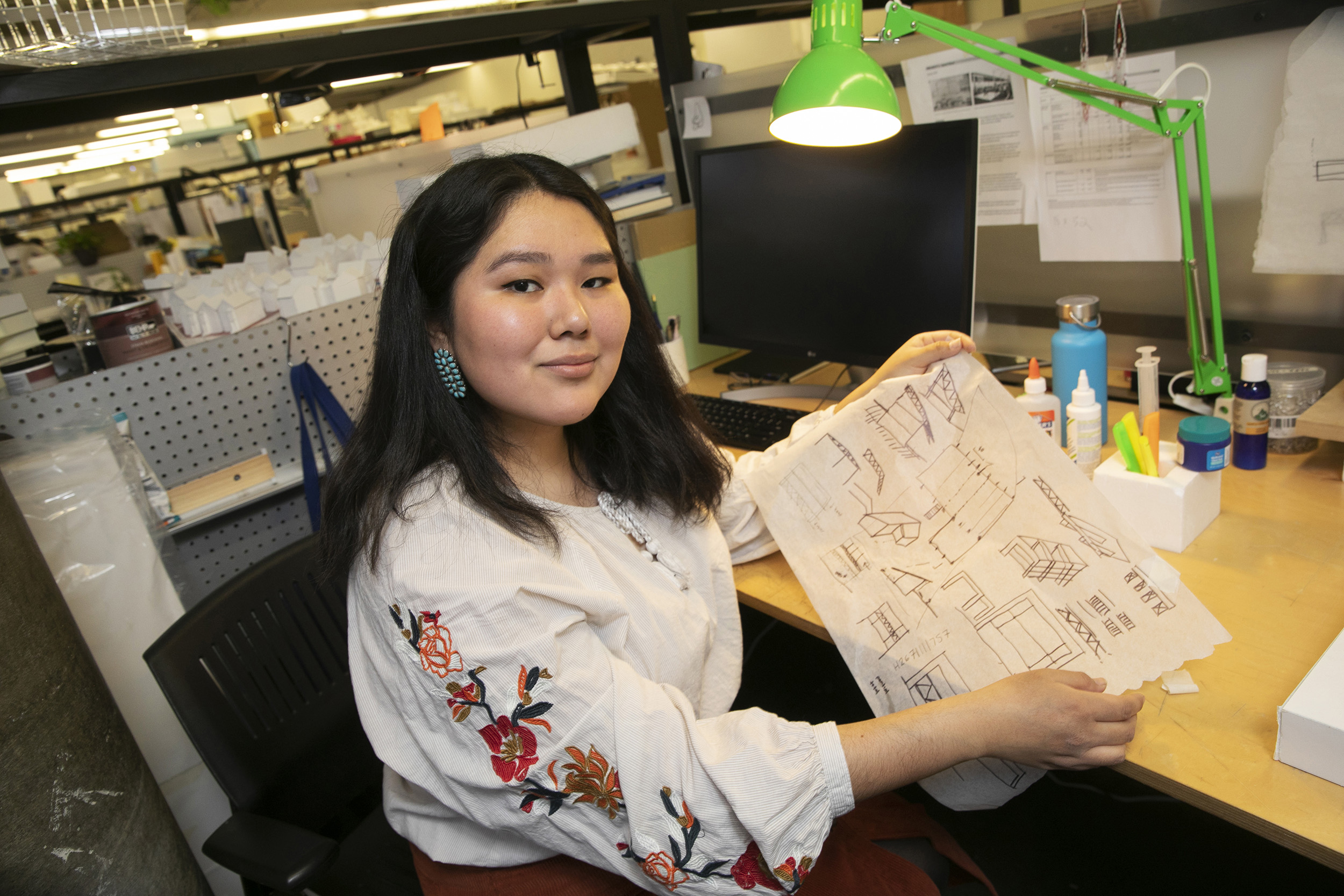
Zoë Toledo sits at her desk in Gund Hall with a collection of quick sketches. She is Diné (Navajo) from Utah and is enrolled in a 3.5 year master in architecture program. “Native land and architecture lend themselves to nontraditional ways of building,” she says. “Native land offers so much more opportunity for investigation, as opposed to bringing pre-fab units into an area, without giving thought to how housing is integrated into the natural environment.”
Jon Chase/Harvard Staff Photographer
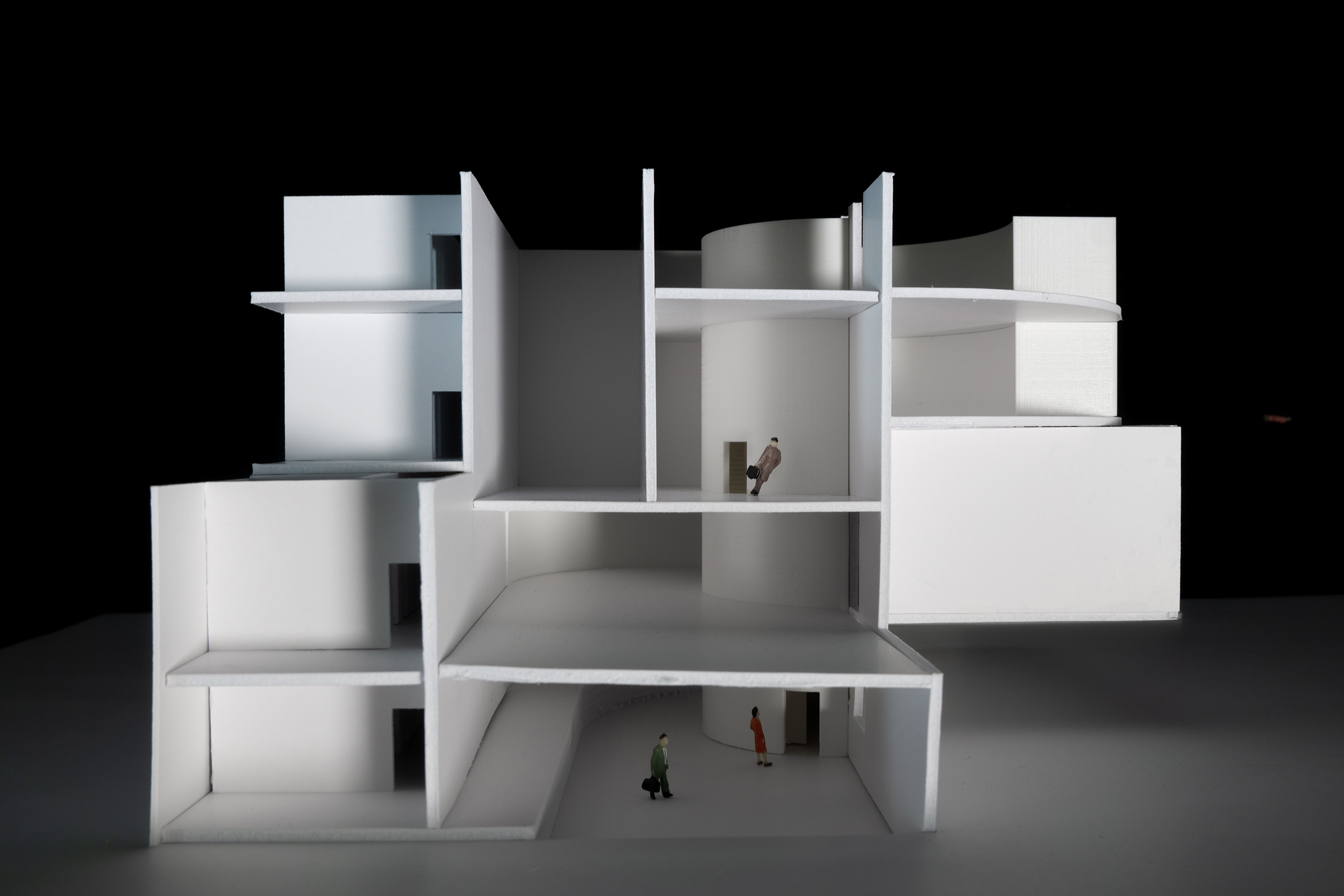
A model designed by Zoë Toledo. “My mother keeps asking me when I’m coming home, but I know why I’m here. I want to hone my skills in design to then go back and address the specific needs of my community,” says Toledo.
Jon Chase/Harvard Staff Photographer
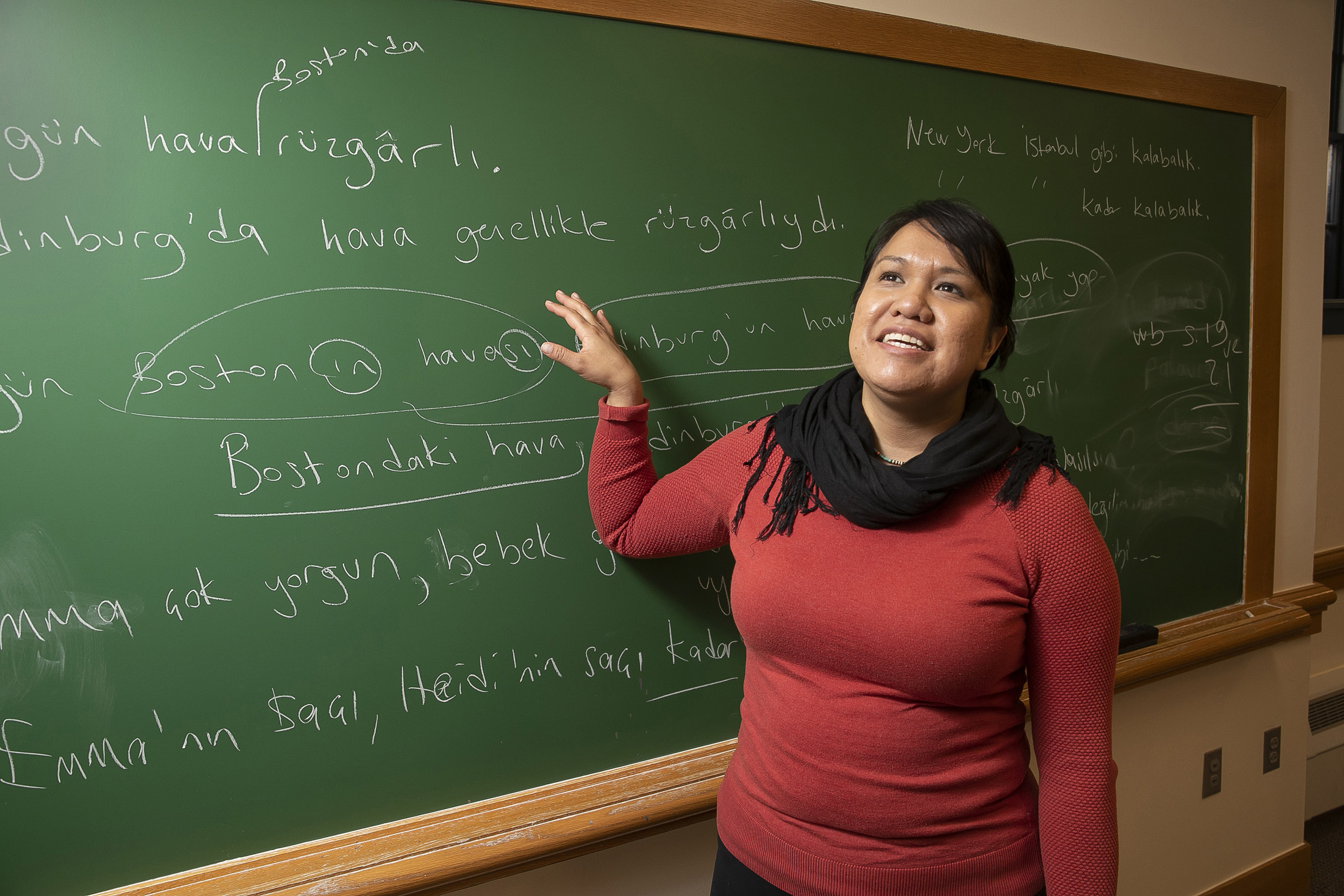
Heidi Brandow, M.Des., Art, Design, and Public Domain ’21, is both Navajo and Hawaiian. She stands by a chalkboard with Turkish script. Brandow studied industrial design in Turkey. She is currently taking a course in Turkish language at Harvard.
Jon Chase/Harvard Staff Photographer
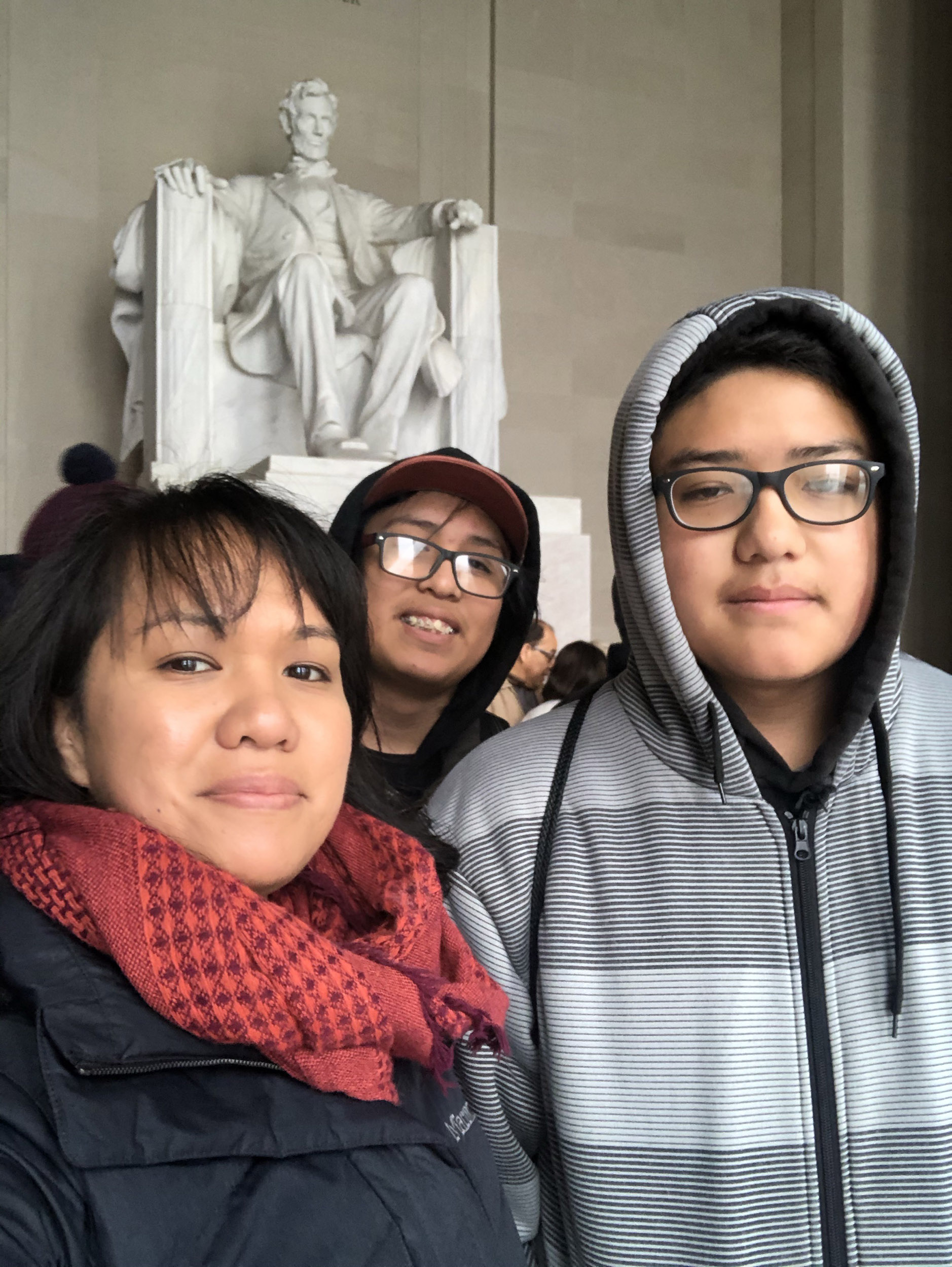

Heidi Brandow with sons Kian, 14, (center) and Mateo, 15. While attending the GSD in Cambridge, Brandow’s sons live with other family members 2,000 miles away in New Mexico. Brandow paints a mural at the Museum of Contemporary Native Arts in Santa Fe, N.M., in February 2019. “My research is centered on the inclusion of Indigenous people and perspectives in the development of ethical and sustainable methods of creative engagement. I intend on applying the experiences gained at the GSD toward working with Native communities,” she said.
Photos courtesy of Heidi Brandow




